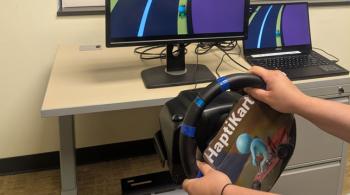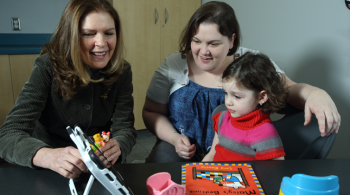BALTIMORE, March 18, 2019 – It is estimated that 1 in 10 youth in the U.S. has a serious psychiatric disorder. For those in crisis, or without access to a mental health provider, the emergency department (ED) has become the national safety net for care. Unfortunately, many EDs are not equipped with the mental health expertise needed to provide care for these youth.
In a recent study published in Pediatrics, Luther Kalb, PhD, with the Center for Autism and Related Disorders and Department of Neuropsychology at Kennedy Krieger Institute, and a team of researchers* from the Johns Hopkins School of Public Health and the National Institute of Mental Health, examined trends in psychiatric ED visits from 2011 to 2015 among youth ages 6 to 24 in the U.S. The study monitored trends and correlates of psychiatric ED visits over time across different age, sex and racial/ethnic groups, paying particular attention to visits related to suicide and self-injury.
Dr. Kalb and colleagues found that between 2011 and 2015, psychiatric ED visits increased across the U.S., with the largest increase in 2015. Young adults, ages 17 to 24, had the highest number of psychiatric ED visits. However, the largest increase in visits over time was among adolescents and non-white youth. Among adolescents, visits to the ED for suicide/self-injurious behaviors more than doubled in the five-year time space. Only one in six youth who visited the ED for psychiatric concerns saw a mental health professional.
“There are many potential reasons for this rise in psychiatric ED visits, including greater recognition by providers, increased reporting by parents and youth, and the growing suicide epidemic,” said Kalb. “This study is significant because it points to a need for greater psychiatric expertise in the ED. The ED has been at a breaking point for a long time, with incredibly long wait times and decreasing access to inpatient psychiatric beds. We really need new, evidenced-based models of crisis care.”
Data related to this study came from the National Ambulatory Medical Care Survey, a national survey of ED visits across the US. Psychiatric ED visits were identified using International Classification of Disease, 9th Revision, and Reason for Visit Codes. Survey weighted logistic regression analyses were conducted to examine trends in as well as correlates of psychiatric ED visits. Data from the US Census Bureau was used to examine population rates.
About Kennedy Krieger Institute:
Internationally recognized for improving the lives of children and adolescents with disorders and injuries of the brain, spinal cord and musculoskeletal system, Kennedy Krieger Institute in the greater Baltimore/Washington, D.C. region serves 24,000 individuals a year through inpatient and outpatient clinics, home and community services, and school-based programs. Kennedy Krieger provides a wide range of services for children with neurological issues, from mild to severe, and is home to a team of investigators who are contributing to the understanding of how disorders develop, while at the same time pioneering new interventions and methods of early diagnosis. Visit KennedyKrieger.org for more information about Kennedy Krieger.
###
- Study co-authors: Luther G. Kalb, PhD, Emma K. Stapp, PhD, D. Elizabeth Ballard, PhD, Calliope Holingue, MPH, Amy Keefer, PhD, & Riley, A., PhD















